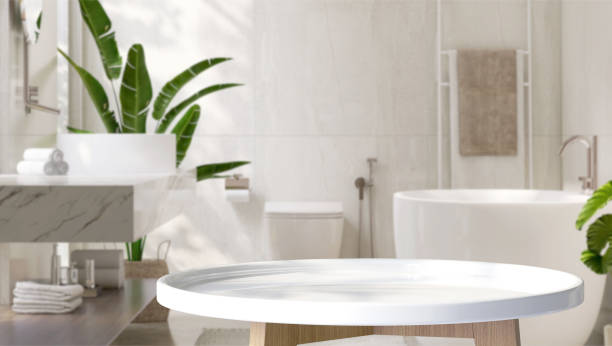Introduction
Furniture has always been more than utility. It reflects taste, status, and lifestyle. Among classic designs that have stood the test of time, the pedestal table holds a special place. With its single supporting column instead of four legs, it combines both beauty and functionality. From dining rooms to entryways, its versatility makes it a staple in many homes.
This article explores the fascinating journey of the pedestal table, from its origins in history to modern design variations. You’ll also learn styling tips, buying considerations, maintenance advice, and current design trends.
What Is a Pedestal Table?
A pedestal table is characterized by a single central support, often widening at the base for stability. Unlike four-legged designs, it provides more legroom and a sleek, elegant silhouette. While many think of round dining tables when hearing the term, pedestal tables also include side tables, entryway stands, and decorative accent pieces.
History of the Pedestal Table
Early Origins
Pedestal designs date back to ancient civilizations. Egyptians used stone pedestals for ceremonial offerings. Greeks and Romans later adapted the concept, creating marble and bronze pedestal stands to display art and religious symbols.
Renaissance and Baroque Periods
During the Renaissance, pedestal tables gained prominence as functional yet artistic furniture. Carved wooden bases became popular, reflecting wealth and craftsmanship. Baroque designs often showcased heavy ornamentation with gilded finishes.
18th and 19th Century Europe
In the 18th century, pedestal dining tables flourished in England. Cabinetmakers like Thomas Chippendale and George Hepplewhite designed elegant single-base tables with refined carvings. In the Victorian era, round pedestal dining tables became centerpieces for formal dinners.
20th Century to Modern Era
With industrialization, mass production brought pedestal tables into everyday homes. Designers of the mid-century modern movement simplified the concept, favoring clean lines and innovative materials such as steel and molded plywood. Today, the pedestal table blends tradition with contemporary style, making it adaptable to various interior themes.
Advantages of a Pedestal Table
1. Space Efficiency
The absence of corner legs creates extra seating space, making it ideal for smaller dining areas.
2. Elegant Aesthetics
A single base creates visual balance and symmetry, complementing round and oval tops beautifully.
3. Versatility
It works in dining rooms, kitchens, patios, and entryways. Small pedestal stands even serve as plant holders or side tables.
4. Stability
Well-designed pedestal bases provide sturdy support, especially for circular tabletops.
5. Timeless Appeal
From antique to modern, these tables maintain a classic, enduring charm.
Types of Pedestal Table
Dining Pedestal Table
- Round: Perfect for intimate gatherings.
- Oval: Offers more seating while retaining elegance.
- Square/Rectangular Pedestal: Less common but practical for modern spaces.
Accent and Side Pedestal Table
Often used next to sofas or as nightstands, these smaller versions provide both utility and style.
Entryway Pedestal Table
Tall and narrow designs are common in foyers, often paired with floral arrangements or decorative mirrors.
Outdoor Pedestal Table
Made of stone, wrought iron, or weatherproof resin, these withstand outdoor conditions while enhancing patios.
Popular Materials
Wood
- Oak: Durable with a rustic look.
- Mahogany: Rich and luxurious.
- Maple: Light and versatile.
- Walnut: Sleek with deep tones.
Metal
Steel and iron bases add industrial character, while brass and bronze bring vintage sophistication.
Glass
Often used for tabletops, glass pairs beautifully with wood or metal pedestals.
Stone
Marble and granite pedestal tables provide durability and opulence, perfect for statement pieces.
Composite Materials
Modern designs use MDF or engineered wood for affordability and variety.
How to Choose the Right Pedestal Table
Measure Your Space
Ensure the table size fits comfortably without overcrowding.
Match Interior Style
- Rustic homes: Choose reclaimed wood.
- Modern spaces: Opt for sleek metal or glass.
- Traditional rooms: Go for carved wood bases.
Consider Functionality
Think about how you will use the table—daily dining, occasional entertaining, or as a decorative accent.
Check Stability
Wider bases provide better support for larger tabletops.
Budget Wisely
Prices vary widely, from affordable manufactured pieces to high-end custom designs.
Styling a Pedestal Table
Dining Room Ideas
- Add a bold centerpiece such as candles or floral arrangements.
- Pair with upholstered chairs for comfort.
- Use a statement chandelier overhead to highlight the round symmetry.
Living Room & Accent Uses
- Place next to sofas with a lamp for cozy lighting.
- Decorate with books, vases, or sculptures.
Entryway Styling
- Use tall arrangements to create vertical balance.
- Pair with a round rug to complement the shape.
Outdoor Inspiration
- Add lanterns or planters on stone pedestal tables.
- Use weather-resistant runners for seasonal styling.
Pedestal Table Design Trends for 2025
- Minimalist Geometry: Clean lines with neutral tones.
- Mixed Materials: Wood bases with marble tops or glass paired with steel.
- Sustainable Options: Reclaimed wood and eco-friendly finishes.
- Bold Bases: Sculptural pedestals acting as art pieces.
- Compact Multifunctional Designs: Tables doubling as storage or display stands.
Caring for Your Pedestal Table
- Regular Cleaning: Dust wooden bases and wipe spills promptly.
- Protective Coatings: Use table mats and coasters to prevent damage.
- Seasonal Maintenance: Apply wax or oil to wood and sealant for stone.
- Avoid Direct Sunlight: Prevents discoloration of wood and fading of finishes.
Average Cost
- Budget Options: $100 – $400
- Mid-Range: $500 – $1,200
- Luxury Custom Designs: $2,000+ depending on material and craftsmanship.
Frequently Asked Questions (FAQ)
Q1: What makes a pedestal table different from other tables?
Its single central support offers better legroom and a unique design compared to four-legged tables.
Q2: Are pedestal dining tables stable?
Yes, especially when designed with a wide base proportionate to the tabletop size.
Q3: What is the best material for a pedestal dining table?
Wood and marble are timeless, but glass and metal suit modern interiors.
Q4: Can these tables be used outdoors?
Yes. Choose stone, iron, or weather-resistant resin versions for patios.
Q5: How do I choose chairs for a pedestal dining table?
Opt for chairs that balance the table’s size. Round tables pair well with curved-back chairs.
Q6: Do pedestal tables come in extendable versions?
Yes. Many dining pedestal tables feature leaf extensions for added seating.
Q7: How do I maintain a marble pedestal table?
Wipe with a damp cloth, avoid acidic cleaners, and reseal periodically.

